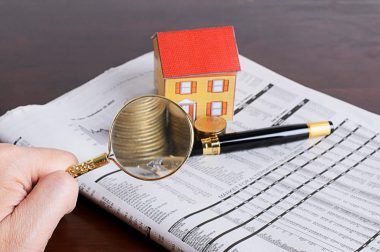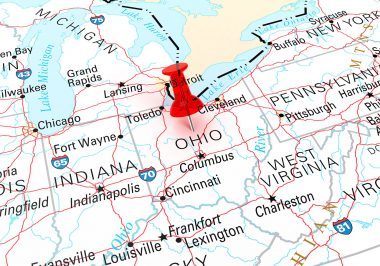What is real estate owned or REO meaning in real estate?
Updated Tue, Oct 21, 2025 - 6 min read
Top blog articles
If you’re in the market to buy a house quickly (and cheaper), you could consider buying real estate-owned or REO properties. So, what is the REO meaning in real estate? Let’s find out, here.
What is REO meaning in real estate?
A real estate-owned property aka bank-owned property is a piece of real estate that fails to sell at a foreclosure auction. When owners default on their home mortgage or loan, the bank or the original lender repossesses the property to sell it. These lenders could include banks, non-traditional lenders, government-related entities such as Fannie Mae and Freddie Mac, or other government bodies.
Other situations where a house returns to the lender might involve the property owner(s) moving out or passing away, with heirs unable or unwilling to manage the property. This is why REO properties usually come at a discounted price on the REO market. However, they may need significant repairs.
To sell an REO, the lender must remove any occupants and clear liens on the property. If there’s a lack of buyers or the property requires substantial repairs, the lender may hold onto it for some time. As a potential home buyer, you might find discounted purchase prices on REO properties, but the home-buying procedure may differ from traditional home sales, particularly during negotiations and financing.
How does a property become REO?
It all starts when a borrower defaults on their mortgage payment or loan payment. Lenders attempt to work with the borrower to resolve the issue, but if unsuccessful, the next step is foreclosure.
Home foreclosures are not uncommon in our economy. The lender repossesses the property and attempts to sell the property to recover the outstanding loan balance. If the lender or bank can’t sell the foreclosed property, they give such a property a Real Estate Owned (REO) property status. Since banks prefer not to handle maintenance and property management, they list it on the REO market, often at a lesser sale price than its market value.
Here’s how a home gets an REO status:
- The original homeowner defaults on the home mortgage.
- The property enters foreclosure, with options such as a short sale or deed back to the lender.
- A foreclosure sale is conducted. But if no buyer is found, the lender takes over.
- If unsold, the property becomes REO inventory.
What to remember when buying an REO property?
After undergoing the foreclosure process, banks have two options for selling these homes. Firstly, they may list the property as “bank-owned” to indicate ownership and prompt a quick sale. Should the foreclosure sale fail, the bank may opt for auction, selling to the highest bidder.
Banks anticipate significant price reductions on these properties, making it possible for buyers to acquire them below market value. Typically, REO homes are in poor condition and require extensive home renovation. They are often sold “as is”. Of course, the level of required repairs varies from one property to another.
If you are contemplating buying such a house, you must thoroughly investigate the property through a home inspection before making an offer. This will help you assess your capacity and budget for handling the necessary home improvement.
What are the pros and cons of buying an REO property?

More often than not, buying an REO house can be profitable for home buyers, house flippers, or property investors. However, like any financial investment, this one too may present some challenges. That’s why, it’s important to weigh both the advantages and disadvantages of buying such real estate.
Pros of buying REO properties
- You get discounted prices. REO properties are often sold at a discount to their market value, making them attractive investments.
- There are no outstanding liens or debts. Purchasing an REO means acquiring a lien-free property, with clear titles and zero outstanding debts.
- There is immense negotiation potential. Lenders are usually motivated to sell REO properties quickly. This increases the likelihood of negotiation and potential savings for buyers.
Cons of REO properties
- These properties are sold as-is. Lenders typically sell REO properties without making major repairs or renovations. Such a situation requires new buyers to invest in upgrades.
- Such a purchase involves a high cost of home repairs. REO properties often require extensive repairs and upgrades, potentially outweighing initial cost savings from discounted prices.
- They may be tenanted properties. Multi-family REO properties may still be occupied by tenants. This necessitates compliance with landlord-tenant laws. Not to forget, potentially unexpected responsibilities for buyers turned landlords.
Who manages bank-owned properties?
REO properties are overseen by the lender’s REO specialists. They handle various tasks such as marketing the properties, reviewing offers, preparing reports on property status, and tracking deeds. They also collaborate with the lender’s property manager to prepare properties for vacancy or winterization. The REO specialist’s goal is to assist the bank in swiftly and effectively liquidating its properties.
They may hire local listing agents to list REP properties on the Multiple Listing Service (MLS) for wider exposure.
What is the best way to finance a bank-owned real estate?
To finance an REO property, you can use various methods. Here are some of your funding options. Remember that these options provide you flexibility based on your financial situation and credit score.
- Conventional mortgage: This loan type is ideal for those with good credit. It offers fixed or adjustable-rate terms.
- FHA (Federal Housing Administration) loans: These government-insured loans are available to individuals with lower credit scores. However, they often come with additional insurance requirements.
- Home equity loan: If you already own a house with equity, you can borrow against it to finance an REO purchase.
- Renovation loan: Such a loan is designed for buyers seeking to purchase and renovate a home in one loan package. It typically requires a good credit score.
- Hard money loan: This type of loan comes with higher interest rates, down payments, and insurance requirements. It’s often used for properties needing extensive maintenance. You can always use hard money loans initially and then switch to conventional or FHA loans later.
Last thoughts
Now that you know the REO meaning in real estate, you can see that buying such a property could make the effort of improving it worthwhile. You can buy it at a discounted price while utilizing flexible financing choices. So, look out for an REO sale with the help of a licensed real estate agent. A good place to start is the United States Department of Housing and Urban Development (HUD) website.









